How To Read A Prosecco Label
3rd October 2022

Welcome to this Step by Step Guide on how to easily examine and understand the wording on a Prosecco Label, so when you’re next in your local supermarket or looking online you’ll be able to recognize the lesser-known facts that a Prosecco Label is trying to tell you.
Step 1 – Selecting a Bottle
Every bottle of Prosecco will have a label, not all will have the same information, some information is required by law and others are down to the winery, so let’s pick 3 different bottles and find out what their labels have to say, I’ll break down 2 of the labels in pictures for you and then leave the third label for you test your knowledge at the end.
I’ve chosen a bottle of Villa Sandi, Montelvini and Riva Dei Frati to look at their labels, both front and back.
Some of the time, the front label will be enough, but for those times when it doesn’t provide you with adequate information, we’ll also check out the back label to see how that might be presented.
Step 2 – Reading The Front Label
I’ve crafted these images to help make the labels easier to understand, when figuring out where to start, it’s easiest to go from top to bottom.
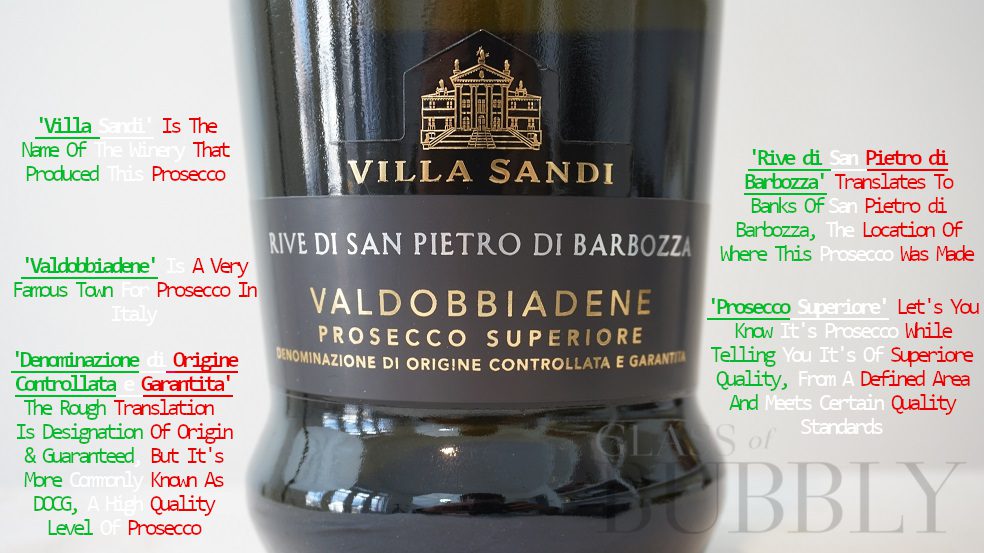
Villa Sandi – In this case, Villa Sandi is the Amazing Producer of this Prosecco bottle.
Valdobbiadene – This is a very famous town in the Prosecco Region that produces good quality Prosecco, it’s located in the province of Treviso, Veneto, Italy.
Denominazione di Origine Controllata e Garantita – More commonly known as DOCG, which you can identify by the gold/brown label around the neck of a Prosecco bottle, the DOCG designation was created in 1980 after people started complaining of too many DOCs being of such variable quality. DOCG is considered higher quality compared to DOC.
Rive di San Pietro di Barbozza – Translation, Banks of San Pietro di Barbozza, this is where this bottle of Prosecco was produced.
Prosecco Superiore – This means that this Prosecco has met a superior quality standard from a defined region in Prosecco.
Step 3 – Reading The Back Label
The back label says a lot of what was on the front label, like, Prosecco, Winery Name, Year and Grape, the added information is as follows.
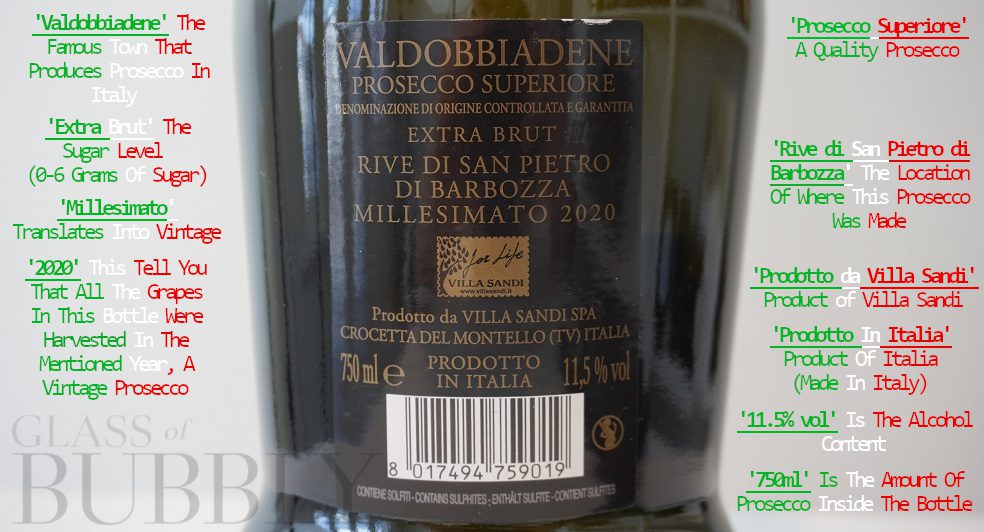
Extra Brut – This tells the Sugar Level to expect in the bottle, Extra Brut means between 0-6 grams of sugar per bottle.
Millesimato – In English Millesimato means Vintage, if you see this word on a label, it means you’ll be enjoying a Vintage, but you can also identify a vintage by the more common ‘date, such 2020, you won’t always see Millesimato, but if its a vintage you’ll always see a date.
2020 – This is the Vintage year, meaning that all the grapes used in this bottle were harvested in that year, on this bottle all the grapes were harvested in 2020.
Prosecco Superiore – This means that this Prosecco has met a superior quality standard from a defined region in Prosecco.
Prodotto da Villa Sandi – Prodotto translates to Produced, this simply lets you know that Villa Sandi produced this Prosecco.
Prodotto in Italia – This tells you that this Prosecco was Produced in Italy / Made in Italy, although Prosecco is not produced anywhere else other than Italy.
11.5% – This is the Alcohol Content inside the bottle, a nice level to enjoy.
750ml – This lets you know how much liquid/Prosecco is inside the bottle.
Let’s Try Another Prosecco Label
Not all Prosecco Labels are the same, with them being produced by different wineries, in different locations with different grapes and sugar levels, it’s worth doing another one to make sure we’ve got it.
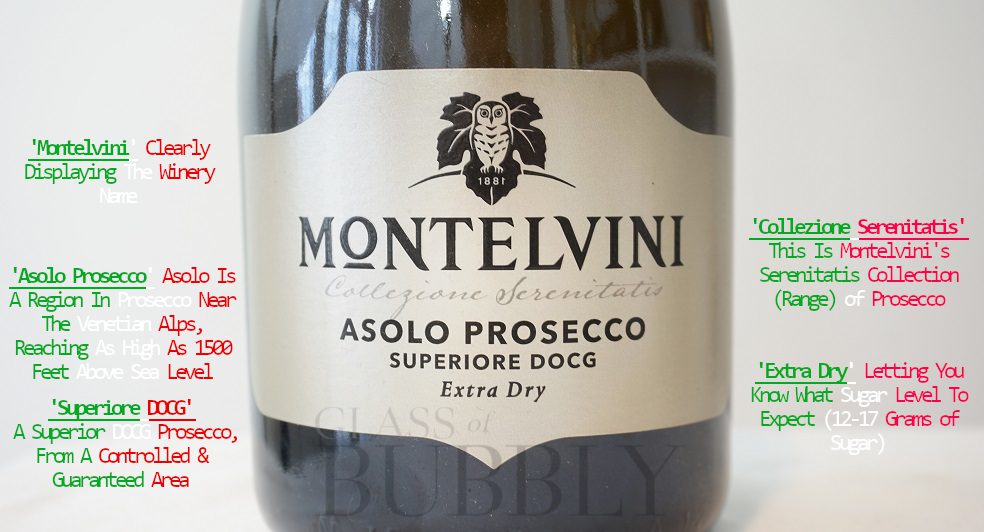
Montelvini – This Prosecco was made by Montelvini.
Asolo Prosecco – Asolo is a region in Prosecco near the Venetian Alps reaching as high as 1500 feet above sea level.
Superiore DOCG – This lets you know that this Prosecco is of a Superiore quality and has met the required standards from a set area.
Collezione Serenitatis – This simply refers to a collection of Prosecco produced by Montelvini, its their Serenitatis Collection/Range.
Extra Dry – This tells you the Sugar Level, although it says Extra Dry, it’s sweeter than the standard Brut you see on many bottles, Extra Dry contains 12-17 grams of Sugar.
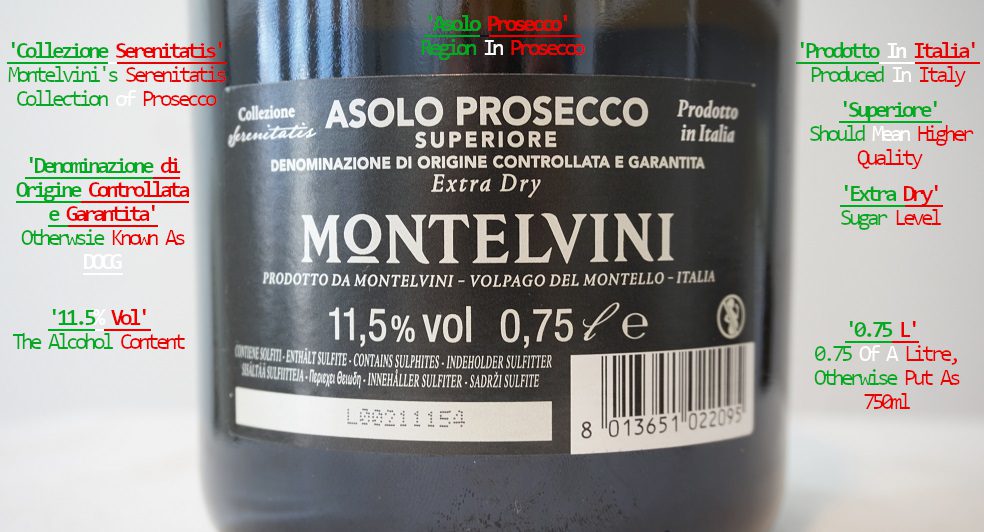
Denominazione di Origine Controllata e Garantita – More commonly known as DOCG, which you can identify by the gold/brown label around the neck of a Prosecco bottle, the DOCG designation was created in 1980 after people started complaining of too many DOCs being of such variable quality. DOCG is considered higher quality compared to DOC.
11.5% – This is the Alcohol Content inside the bottle.
Prodotto in Italia – This tells you that this Prosecco was Produced in Italy / Made in Italy, although Prosecco is not produced anywhere else other than Italy.
Superiore – This lets you know that this Prosecco is of a Superiore quality and has met the required standards from a set area.
Extra Dry – This tells you the Sugar Level, Extra Dry contains 12-17 grams of Sugar.
0.75 L – This lets you know how much liquid/Prosecco is inside the bottle, you normally see 750mls but 0.75 L is the exact same just in a different measurement.
Before you try and read a Prosecco Label, there’s one more thing to look at on a Prosecco Bottle, the neck of a Prosecco Bottle gives you very valuable information on whether it’s a DOC or DOCG, the quality standard of Prosecco.
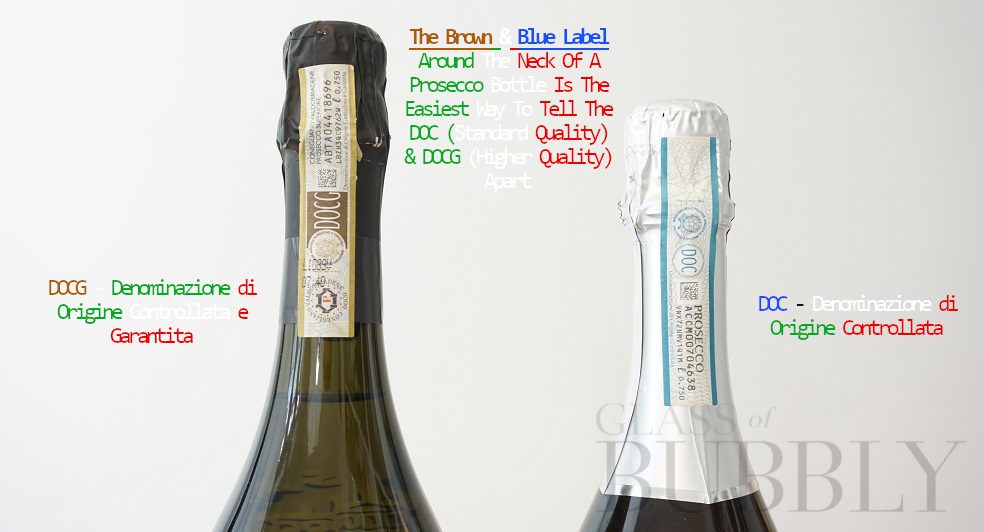
Now You Try Reading The Final Label
Try to figure out what this Prosecco Label is telling you, look back to the previous examples if you need a refresher.
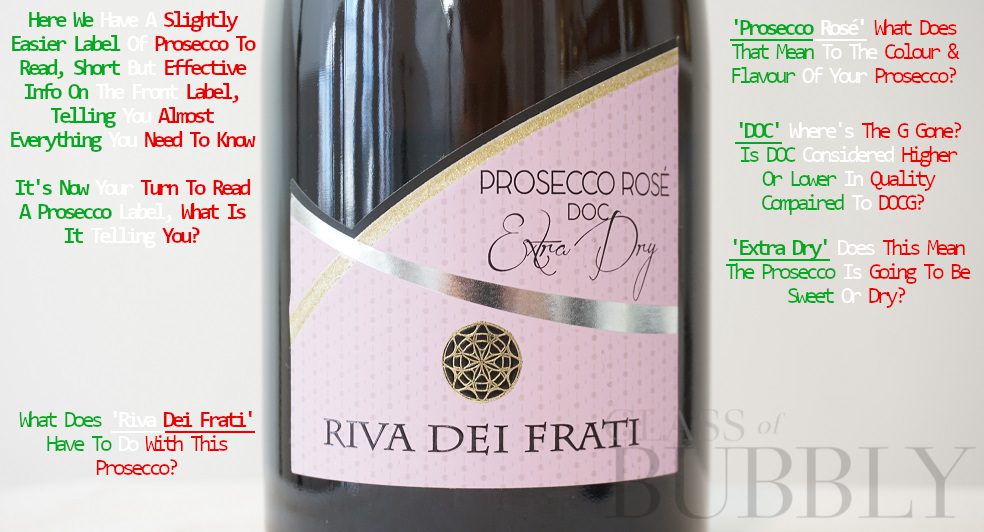
Back Label
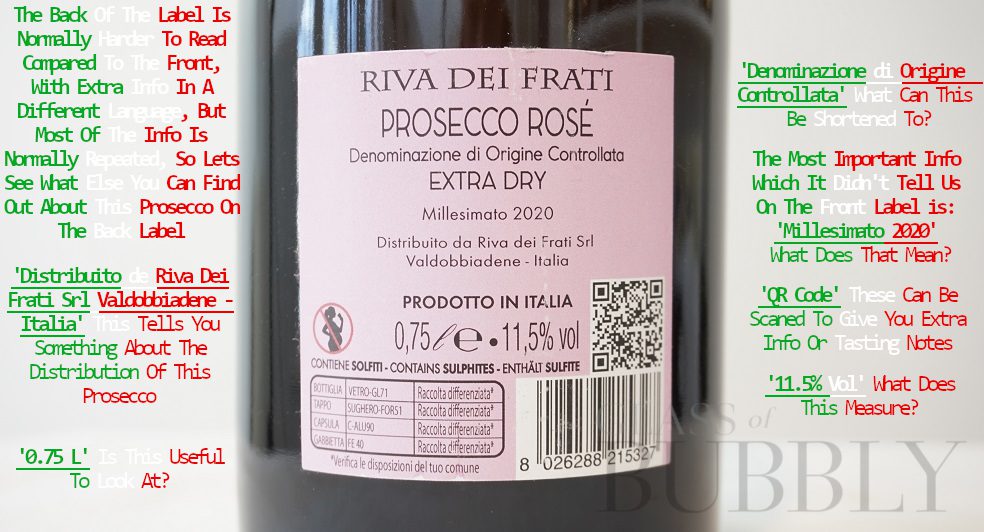
There you have it, hopefully, you’ve learned a little more about what’s on a Prosecco Label and can pick up a bottle of Prosecco and understand exactly what it’s telling you.
![]()
Oliver Walkey
Champagne and Sparkling Wine Writer, Focused on Bringing the Exciting and Fascinating World of Bubbly to You.
